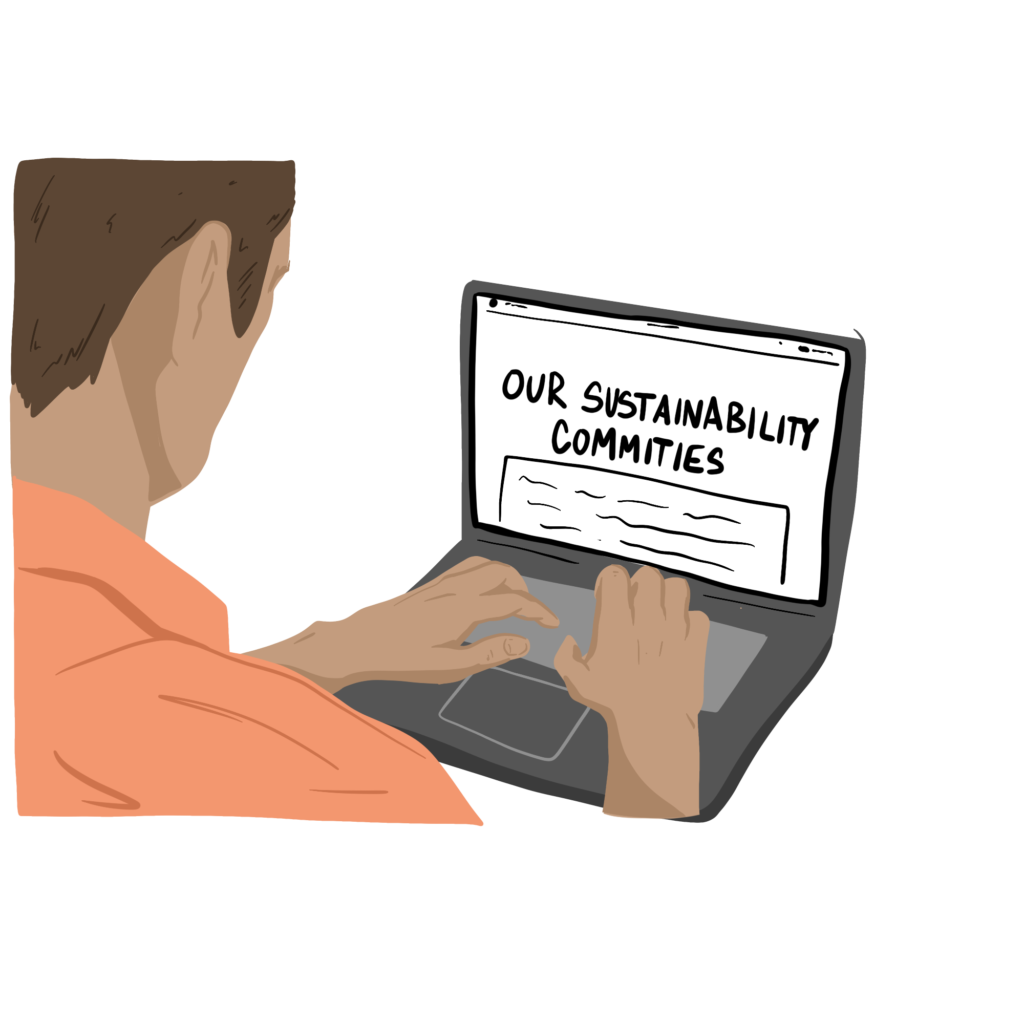
Looking to get started with sustainability or refresh your approach? How to engage employees in corporate sustainability is an important piece to any successful program. Check out our top tips and pitfalls to avoid here.
Why is sustainability at work important?
Lots of companies include people that care about sustainability. Maybe it’s even in your company’s mission statement since a whopping 90% of executives believe sustainability is important. But why is sustainability seen as so important?
To begin with, sustainability is tied to the financial success of a company in the eyes of many. Sustainable businesses are more profitable over time and perceived by investors as able to weather financial downturns better. Customers are also eager to choose and stick with companies that have commitments to sustainability.
But sustainability isn’t just popular with investors and customers — it’s a critical ingredient for recruiting and retaining high-quality candidates. More prospective employees are rejecting offers if the company values, including sustainability, don’t match their values. Almost 75% of workers in the US want their companies to improve sustainability policies. Companies that clearly communicate values and sustainability commitments to employees have more engaged and productive employees that are less likely to quit.
How to gain engagement & avoid greenwashing
Simply stating the values of sustainability and cherry-picking examples isn’t enough to enjoy the full benefits of sustainability. If you want employees to find your sustainability commitments compelling, here’s what to do instead:

- Ask employees! Get to know how employees view current sustainability values and commitments and gather ideas for new sustainability suggestions. This will give you a baseline of how clearly you are currently communicating and exampling your sustainability commitments. It also gives you a sense of where your employees are in terms of sustainability to optimize moving forward as aligned with them as possible.
- Identify what you can measure over time. If a full carbon accounting of all company activities seems too daunting, look at what is easy to start measuring. Utility bills are a great place to start. Employee surveys can identify additional areas of interest for employees. Make all data accessible to stakeholders and keep tracking over time. Measurable data that is consistently tracked over time is a clear way to avoid greenwashing and continue to engage employees in sustainability. If we had to pick one step for you to take, this would be the step.
- Find the best process to improve. Every company has its processes or culture to explore new ideas and implement them. What processes tend to work best in your company? Who are the existing company leaders that care about sustainability that could be included? Be intentional about the process and who will make the effort most successful.
For many companies starting, or restarting, from what feels like ground zero, don’t over complicate your next steps. Ask, measure, and lay out the process and people to move forward sustainability improvements at work are the best things to focus on next. And as with most things, less is more when long-term success is a priority.
Common Corporate Sustainability Pitfalls
For many companies that feel like sustainability is a struggle, let’s dive into some of the common pitfalls and ways to work around them.
Being clear on why it matters to you.

If the current corporate sustainability statement isn’t clear and compelling, kick off this internal conversation with leaders and stakeholders. It will help ground efforts in authenticity rather than possibly outdated assumptions about what a company’s sustainability efforts *should* look and sound like.
From these conversations, you can create a clear statement of purpose to be shared and referenced. Metrics to measure how well you are serving your purpose can flow from such a statement as well.
Under-resourced volunteer committees.
Running lean programs is a good practice. However sometimes these good intentions of avoiding financial waste end up being stretched too far with sustainability efforts. Sustainability committees also need some resources and a leader at the table that cares about sustainability. Someone that has a good sense of what could get support from fellow leaders as well as a good advocate to explain the thinking and possibilities of committee efforts. When committees or sustainability leads create plans based on the company’s “why” regarding sustainability, make sure there is a budget to make it possible to reach goals.
Lack of communication.
Communication needs to flow between all team members and leadership, including listening and sharing out the next steps. When employees or leaders are out of the loop, it can create unintentional roadblocks and missteps. Find a few layers of how to most effectively communicate with employees and company leaders, and make sure there are ways to share and gather input from everyone. Layers could include in-person noticeboards, slack, department meetings, intranet listservs, and so forth.
Capability Gaps.
As sustainability efforts grow, new talents and capacity are needed to meet goals. Often companies will start with a sustainability committee or single hire to shepherd projects forward. In time bigger goals and outcomes will likely evolve, requiring new talents and processes. When you build in ways to measure goals and outcomes, this offers an opportunity for periodic evaluation to signal if you are nearing capability gaps.
All work and no play
If sustainability is mostly a technical endeavor, it misses an opportunity to engage employees. Including something like a sustainability challenge can serve as another communication layer as well as an opportunity to offer extra incentives for morale. Not only can people have fun when there is a friendly competition and some incentives at play to participate, but companies might be able to find fresh ways to align sustainability programs that match employee desires.
Looking for a ready-to-go way to engage employees in sustainability?
Get on the waitlist for Tiny Planet’s Sustainability Challenge Package! Using The Climate Deck, employees can choose from dozens of planet-friendly shifts. Play individually or on teams to encourage connections. Tiny Planet’s digital platform offers a space to track, measure, and share positive collective impacts.